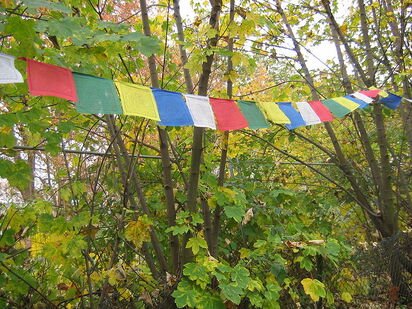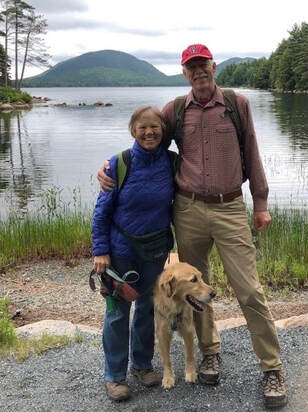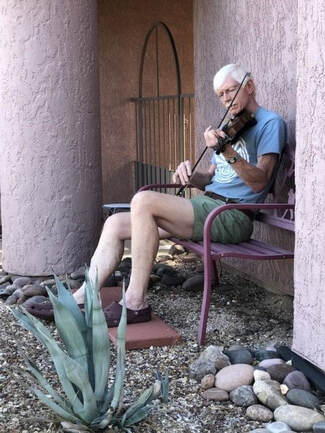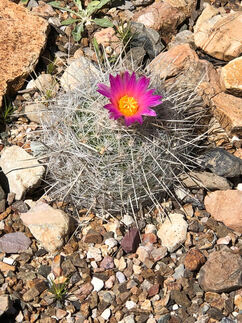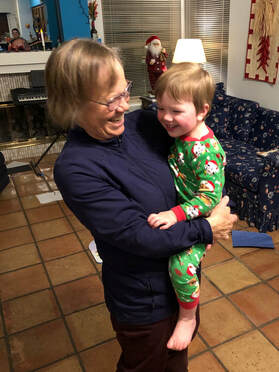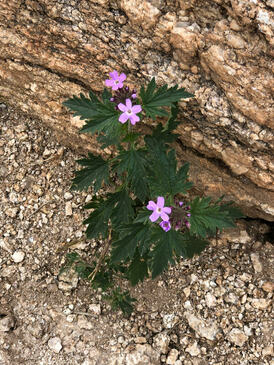Self-care is vital for a sustainable and meaningful life.
Some approaches and perspectives on self-care may feel arduous and unattainable. I have always had plenty of aerobic exercise, but I struggle in my semi-retirement years to get the strength-building exercise that I know I need.
Self-care, though, also has to do with the personal values, priorities, and perspectives that we set for ourselves.
My friend and faculty colleague at the Andrew Weil Center for Integrative Medicine, Siri Chand Khalsa, MD, MS, speaks of her journey with Covid. Like many of us, including me, she tested positive for Covid, but as the days and weeks progressed, she realized her symptoms weren’t going away. In the early days of the pandemic, Dr. Khalsa was one of the first people to experience what we now call “long Covid.”
She suffered from migraines and severe systemic pain. She experienced neurological problems like neuropathy and dysautonomia (that are increasingly recognized as among potentially severe symptoms of long Covid). Most debilitating for her were cognitive symptoms. She found it unusually difficult to concentrate and to focus on the myriad scientific and relationship elements of being a busy physician.
Dr. Khalsa put her medical practice on hold and pursued her own healing. Time, she says, did not make a difference. An expert in integrative medicine, she explored nutritional changes and explored integrative modalities like Ayurveda with, at best, modest benefits.
When I spoke with her this spring, Dr. Khalsa reported that she had finally recovered very well. I asked what had ultimately made the difference. Without hesitation, she said, “I gave myself permission to rest.”
I can see it. In our culture, most of us labor under the assumption that our value and worth increase in tandem with what we accomplish. This is certainly a reality in medicine. There are external forces in medical systems that move health care practitioners to be “productive,” often beyond the bounds of human capacity. And there are internal pressures, as well. When you are passionate about your profession and about making a difference in other people’s lives, the temptation is to work with greater zeal and greater engagement, rather than less.
For Dr. Khalsa, rest mattered. Being able to rest was restorative, and it also gave her the space to listen more attentively to what she needed in her own self-care. She sought the support of wellness consultants. She became more discerning about relationships that were uplifting, and those that were not. She found herself being more creative. She slept better. She followed her own unique path as a physician and healer with renewed energy and passion.
Self-care is not selfish. On the contrary, seeking the kind of balance that Dr. Khalsa describes is life-affirming.
Self-care rests firmly on self-compassion. Self-compassion means being able to have goals and hold intentions, but being gentle with oneself when life doesn’t allow doing everything, and doing everything to unreachable standards.
Even the arena of self-care itself presents its own challenge of standards and expectations of accomplishment. At the Weil Center, we talk about seven core areas of health, each of which provides opportunities for self-care. They are movement/exercise, nutrition, sleep, resilience, relationships, spirituality, and environment (the latter having to do both with avoidance of toxic exposures and seeking out peaceful places and moments).
All these arenas of self-care can be vitally important, but you can’t do it all. No, you can’t meditate in the garden, have a nutritious breakfast, put in a day of work, come home and do something educational with the kids, run 5k, cook a vegan meal to share with Chris and Pat, read some uplifting spiritual literature, journal, and sleep eight hours. And repeat, with going to the school board meeting and volunteering at the soup kitchen added in your theoretical spare time.
You have to do the best you can. You have to be gentle with yourself. You have to give yourself permission. You have to rest.
So let me invite you to reflect. How might you give yourself permission to pursue self-care in some new or important way? How might you further develop your own spirit of self-compassion? And where do you find rest?
May your own approach to self-care open a door to equanimity in your own life and enlivened service to others.
-----------------
Readers will enjoy seeing more about Dr. Khalsa’s journey and current professional passions and contributions… particularly about the benefits of healthy and creative nutrition… at her website, https://drsirichand.com/blog/.
Some approaches and perspectives on self-care may feel arduous and unattainable. I have always had plenty of aerobic exercise, but I struggle in my semi-retirement years to get the strength-building exercise that I know I need.
Self-care, though, also has to do with the personal values, priorities, and perspectives that we set for ourselves.
My friend and faculty colleague at the Andrew Weil Center for Integrative Medicine, Siri Chand Khalsa, MD, MS, speaks of her journey with Covid. Like many of us, including me, she tested positive for Covid, but as the days and weeks progressed, she realized her symptoms weren’t going away. In the early days of the pandemic, Dr. Khalsa was one of the first people to experience what we now call “long Covid.”
She suffered from migraines and severe systemic pain. She experienced neurological problems like neuropathy and dysautonomia (that are increasingly recognized as among potentially severe symptoms of long Covid). Most debilitating for her were cognitive symptoms. She found it unusually difficult to concentrate and to focus on the myriad scientific and relationship elements of being a busy physician.
Dr. Khalsa put her medical practice on hold and pursued her own healing. Time, she says, did not make a difference. An expert in integrative medicine, she explored nutritional changes and explored integrative modalities like Ayurveda with, at best, modest benefits.
When I spoke with her this spring, Dr. Khalsa reported that she had finally recovered very well. I asked what had ultimately made the difference. Without hesitation, she said, “I gave myself permission to rest.”
I can see it. In our culture, most of us labor under the assumption that our value and worth increase in tandem with what we accomplish. This is certainly a reality in medicine. There are external forces in medical systems that move health care practitioners to be “productive,” often beyond the bounds of human capacity. And there are internal pressures, as well. When you are passionate about your profession and about making a difference in other people’s lives, the temptation is to work with greater zeal and greater engagement, rather than less.
For Dr. Khalsa, rest mattered. Being able to rest was restorative, and it also gave her the space to listen more attentively to what she needed in her own self-care. She sought the support of wellness consultants. She became more discerning about relationships that were uplifting, and those that were not. She found herself being more creative. She slept better. She followed her own unique path as a physician and healer with renewed energy and passion.
Self-care is not selfish. On the contrary, seeking the kind of balance that Dr. Khalsa describes is life-affirming.
Self-care rests firmly on self-compassion. Self-compassion means being able to have goals and hold intentions, but being gentle with oneself when life doesn’t allow doing everything, and doing everything to unreachable standards.
Even the arena of self-care itself presents its own challenge of standards and expectations of accomplishment. At the Weil Center, we talk about seven core areas of health, each of which provides opportunities for self-care. They are movement/exercise, nutrition, sleep, resilience, relationships, spirituality, and environment (the latter having to do both with avoidance of toxic exposures and seeking out peaceful places and moments).
All these arenas of self-care can be vitally important, but you can’t do it all. No, you can’t meditate in the garden, have a nutritious breakfast, put in a day of work, come home and do something educational with the kids, run 5k, cook a vegan meal to share with Chris and Pat, read some uplifting spiritual literature, journal, and sleep eight hours. And repeat, with going to the school board meeting and volunteering at the soup kitchen added in your theoretical spare time.
You have to do the best you can. You have to be gentle with yourself. You have to give yourself permission. You have to rest.
So let me invite you to reflect. How might you give yourself permission to pursue self-care in some new or important way? How might you further develop your own spirit of self-compassion? And where do you find rest?
May your own approach to self-care open a door to equanimity in your own life and enlivened service to others.
-----------------
Readers will enjoy seeing more about Dr. Khalsa’s journey and current professional passions and contributions… particularly about the benefits of healthy and creative nutrition… at her website, https://drsirichand.com/blog/.
